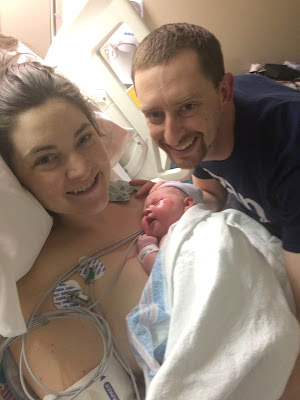I have been running since 5th grade. Our middle school had cross country and track teams for the 5th through 8th graders; I joined cross country in 5th grade and then track in 6th. It was mostly geared towards fun and community, but we were solidly competitive and even ran in a few invitational meets as well as the big conference meet. Our coaches were a teacher and a few parents, each with some legit runners’ acumen, who could find ways to encourage the uncompetitive as well as challenge the more serious athletes.
Over time, my game became the 1600 meter run. When the distance runners went out for long work, one coach would unleash me when we were still a few minutes from school, challenging me to sprint ahead and push the pace beyond what the group could handle. As my mile times improved, another coach taught me how to work splits -- you set a goal time, divide it in four, and attempt to beat that partial time as you complete each of the four laps; coach would stand in the final turn at the 300 meter mark and call out the differential to me to help me know where I stood as the race wore on.1
Through my 8th grade season, I had gotten really good (for a 14-year-old). The coaches had even taken me off the relays to instead run the 400 meter dash, which I set a school record in three times; breaking my own record twice, I graduated with a 1:05 on the books (respectable but surely broken soon after). I also would have set the 1600 meter record, too, if not for a teammate who nosed me out at a meet where we both broke the record, though I guess technically only he actually did; we ran a 5:33. Being part of the team was immensely fun because I was playing with my friends, accomplishing things personally, and scoring some good points for our school in our meets.2
But times and ribbons and records aside, I always had a bad habit while I was running: I didn’t look ahead. While I ran, especially at increasingly longer distances, I had a tendency to look downward. My chin would sag a bit toward my chest, and my eyes would wander toward the ground ahead of me rather than the runners and course ahead. While I was improving my times and finishing better in races, I couldn’t break this habit. My coaches would point it out to me at practices. They would remind me to keep looking up during meets. And I would keep letting my gaze float downward. They encouraged me to have eyes straight ahead, watching the course, the runners in front of me, maybe peeking at the clock if there was one.3 I couldn’t keep it up.
 |
| Running with a club in Ireland at a meet in Fall 2011. Eyes looking almost straight down. |
 |
| Running a half-marathon in Wexford in Spring 2012. Eyes a bit more up, 12 miles in, looking solid. |
 |
| Lookin pooped at this Fall 2015 15K in Chicago. Eyes sinking down! |
 |
| Fall 2016's 15K looks a little better. I'm that orange blur on the right! |
We have to keep our heads up to see the love of Christ coming for us and to be able to encounter others such that we can send that love their way. On the whole, it’s pretty easy to drop your gaze, to be single-minded on narrow, often selfish priorities, but that only causes one to lose sight of life more broadly, not just becoming blind to personal goals but also struggling to see the support and encouragement coming at you. It’s a habit I’m still trying to break, on my runs and in my life. When I can fight it off, I see the affirmations and positivity5 rushing toward me in the love of so many friends and family. I just have to keep lookin’ up.
1 To those of you who are Mario Kart 64 aficionados and remember rumble paks and memory cards, it’s almost like racing your ghost in time trials. Splits and running in general are so well analogized by that nifty Nintendo 64 trope.↩
2 I was super proud of my school record, but finishing top 6 in my two events at the conference meet as an 8th grader was probably as accomplished as I ever got in my storied gym-class-hero-level athletic career.↩
3 As an adult, I’ve actually totally forsaken timing my runs. I occasionally will time a practice run as I prepare for a race, but I’ve found great liberation in just running off my internal clock with my rough feel for mile-pace and just pushing as hard as I decide, whether coasting in lighter training runs or really maxing out in races.
↩
4 Much like with youth basketball, the hairiness of others’ legs can often be a good predictor of the quality of competition.
↩
5 To all of you dear readers, your compliments, affirmations, and other feedback are so much appreciated by this silly author/editor. Every time I start to wonder if the blog is worth the work of sitting and writing and keeping the team organized (they do great work!), every time I inch toward thinking of perhaps wrapping up the blog, another person or two or three spontaneously tell me how they read our posts regularly and really appreciate the work. I am grateful for everyone who has ever given me or the crew an atta-boy, and I always love to hear your thoughts on our work, whether in social media interactions or when we see each other in person. Blessin’s to you all.
↩



No comments:
Post a Comment